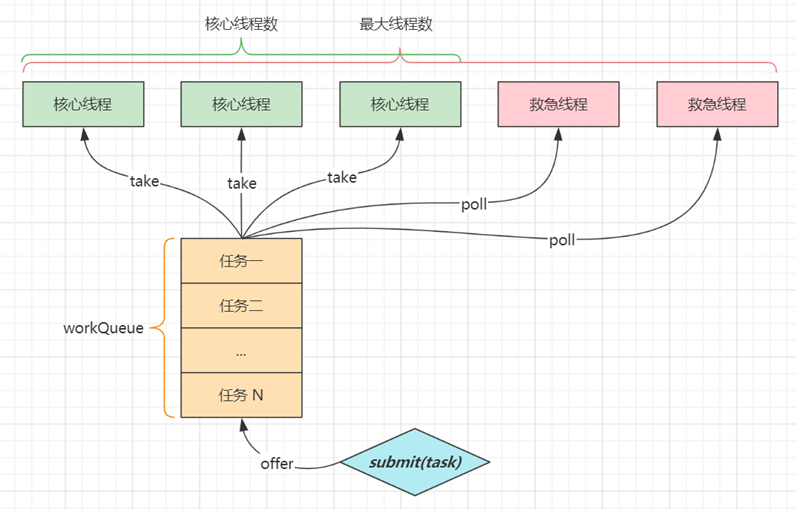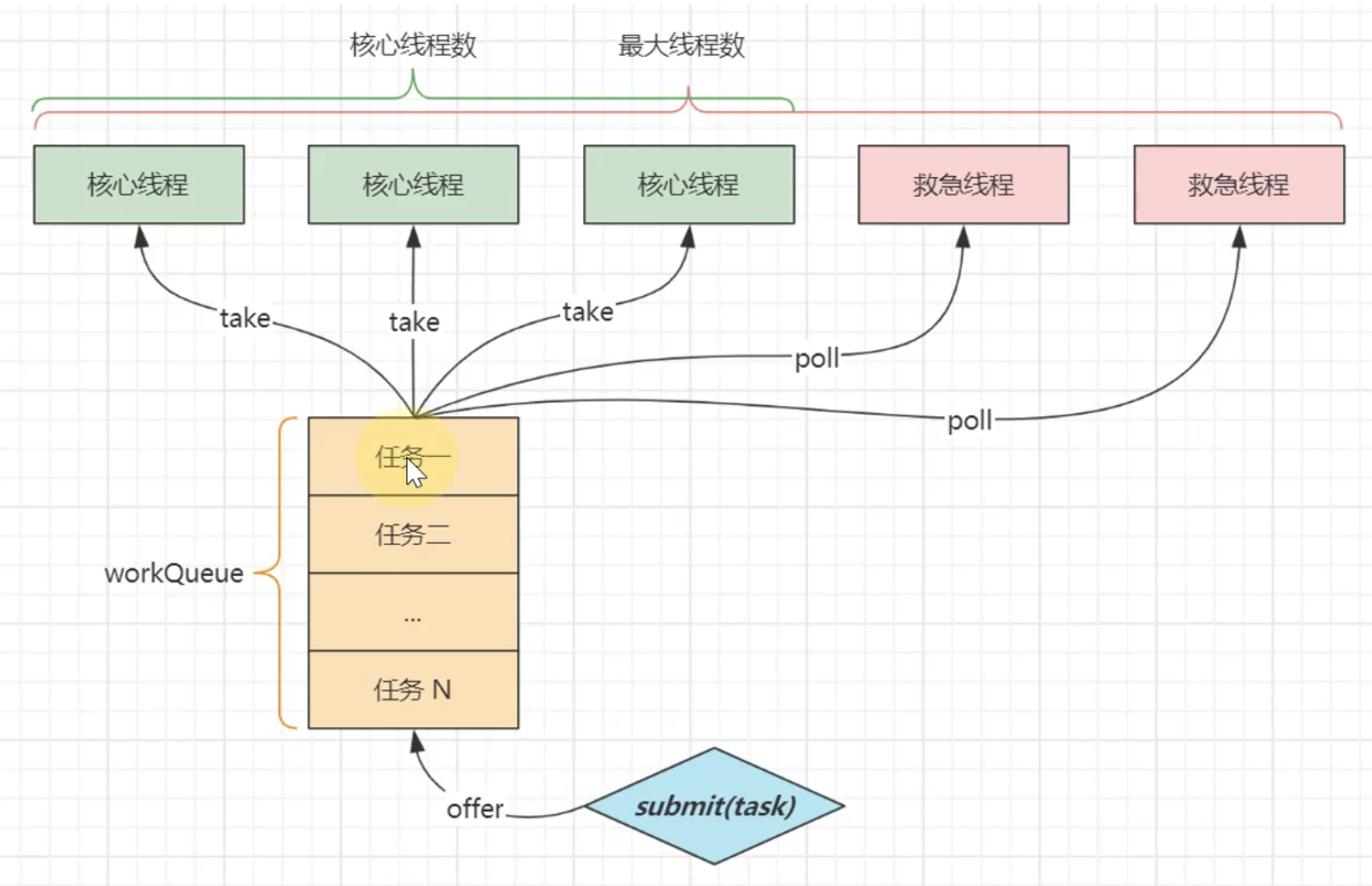并发篇-线程池
面试题: 线程池的核心参数
要求
- 掌握线程池的 7 大核心参数
七大参数
- corePoolSize 核心线程数目 - 池中会保留的最多线程数
- maximumPoolSize 最大线程数目 - 核心线程+救急线程的最大数目
- keepAliveTime 生存时间 - 救急线程的生存时间,生存时间内没有新任务,此线程资源会释放
- unit 时间单位 - 救急线程的生存时间单位,如秒、毫秒等
- workQueue - 当没有空闲核心线程时,新来任务会加入到此队列排队,队列满会创建救急线程执行任务
- threadFactory 线程工厂 - 可以定制线程对象的创建,例如设置线程名字、是否是守护线程等
- handler 拒绝策略 - 当所有线程都在繁忙,workQueue 也放满时,会触发拒绝策略
- 抛异常 java.util.concurrent.ThreadPoolExecutor.AbortPolicy
- 由调用者执行任务 java.util.concurrent.ThreadPoolExecutor.CallerRunsPolicy
- 丢弃任务 java.util.concurrent.ThreadPoolExecutor.DiscardPolicy
- 丢弃最早排队任务 java.util.concurrent.ThreadPoolExecutor.DiscardOldestPolicy

线程池的核心参数
corePoolSize 核心线程数目
- 最多保留的线程数
maximumPoolSize 最大线程数目
- 核心线程+救急线程
keepAliveTime 生存时间
- 针对救急线程
unit 时间单位
- 针对救急线程
workQueue
- 阻塞队列
threadFactory 线程工厂
- 可以为线程创建时起个好名字
handler 拒绝策略
- 四种

创建线程池
自定义线程对象
java
package learn.thread;
public class MyThread implements Runnable {
private final String name;
private final long duration;
public MyThread(String name, long duration) {
this.name = name;
this.duration = duration;
}
public MyThread(String name) {
this(name, 0);
}
@Override
public void run() {
try {
System.out.println(Thread.currentThread() + " running");
Thread.sleep(this.duration);
} catch (InterruptedException e) {
e.printStackTrace();
}
}
@Override
public String toString() {
return "MyThread{" +
"name='" + name + '\'' +
", duration=" + duration +
'}';
}
}创建线程池
java
package learn.thread;
import java.util.concurrent.ArrayBlockingQueue;
import java.util.concurrent.ThreadPoolExecutor;
import java.util.concurrent.TimeUnit;
import java.util.concurrent.atomic.AtomicInteger;
public class ThreadPoolTest {
public static void main(String[] args) {
AtomicInteger count = new AtomicInteger(1);
ArrayBlockingQueue<Runnable> queue = new ArrayBlockingQueue<>(2);
ThreadPoolExecutor threadPoolExecutor = new ThreadPoolExecutor(
2, // corePoolSize
3, // maximumPoolSize
0, // keepAliveTime
TimeUnit.MILLISECONDS, // unit
queue, // workQueue
t -> new Thread(t, "Thread-" + count.getAndIncrement()), // threadFactory
new ThreadPoolExecutor.DiscardOldestPolicy() // handler
);
// 前2个任务占据核心线程
threadPoolExecutor.submit(new MyThread("1", 3600 * 100));
threadPoolExecutor.submit(new MyThread("2", 3600 * 100));
// 3个任务占据救急线程
threadPoolExecutor.submit(new MyThread("3"));
threadPoolExecutor.submit(new MyThread("4"));
threadPoolExecutor.submit(new MyThread("5"));
// 这个个任务会触发拒绝策略
threadPoolExecutor.submit(new MyThread("6"));
}
}拒绝策略
当线程数到达最大值,并且等待队列满了,就出触发拒绝策略
1、新任务抛出异常
java
new ThreadPoolExecutor.AbortPolicy()异常
java.util.concurrent.RejectedExecutionException2、调用者自己运行任务
java
new ThreadPoolExecutor.CallerRunsPolicy()3、直接丢弃
java
new ThreadPoolExecutor.DiscardPolicy()4、丢弃最早加入队列的任务,并把新任务加到队列
java
new ThreadPoolExecutor.DiscardOldestPolicy()